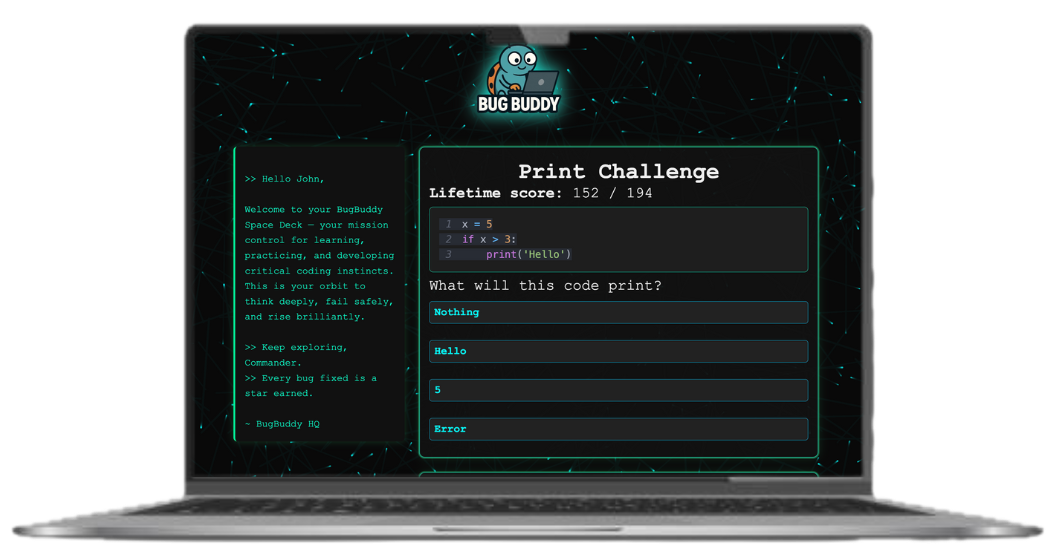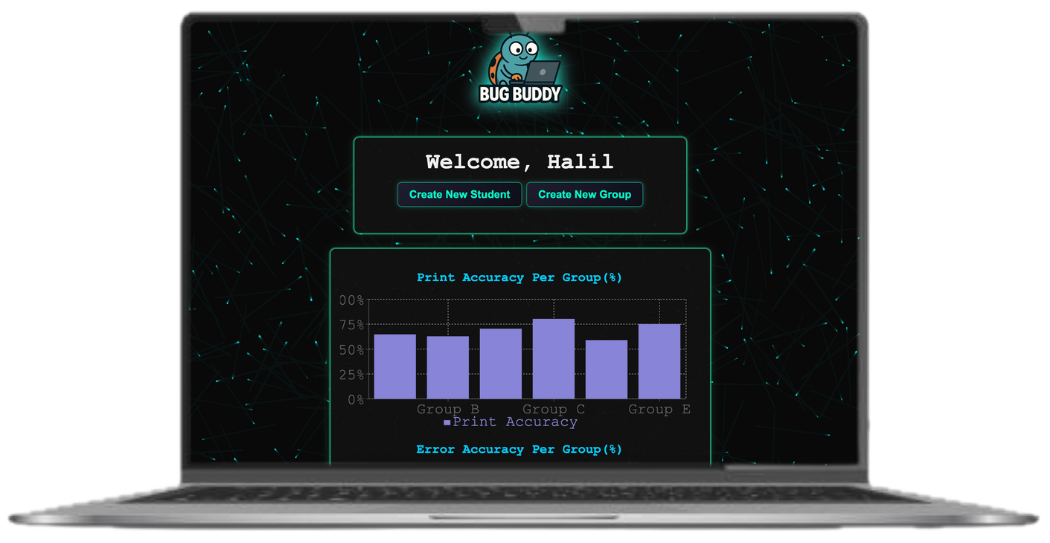Coding is Fun (Until You Hit an Error)
Learning to code is tough — especially when you're just getting started. Errors pop up, outputs surprise you, and often, you're left wondering what just happened.
That’s exactly why I built BugBuddy.
To help my students, I developed a platform that blends gamification, AI, and pedagogy to create an engaging tool where students learn by doing — and debugging.
Why BugBuddy?
Many students today rely on Large Language Models (LLMs) like ChatGPT to generate code, but often this shortcut skips over critical thinking and real understanding. Programming is not just writing code that works, it’s about understanding how and why it works (or doesn’t).
BugBuddy is my answer to that challenge. It gives students a space to practise output prediction and error detection: two skills central to learning any programming language.
What Does It Do?
BugBuddy offers two main interactive quests:
- Print Quest – Students see a Python code snippet and must predict the correct output.
- Debug Quest – Students are challenged to identify the error in a given piece of code.
In both quests, students choose from multiple-choice answers. Their scores are tracked over time, creating a competitive and reflective learning experience.

BugBuddy Student Dashboard: Two quests to build real understanding.
Powered by AI, Backed by Pedagogy
The code snippets in BugBuddy aren’t static — they’re dynamically generated using OpenAI’s GPT-3.5 Turbo API. This ensures that no two students get the same question, and the platform can scale easily.
The whole experience is built on modern tech:
- Frontend: React.js
- Backend: Node.js with Express
- Database & Auth: Supabase
- Deployment: Netlify (frontend), Railway (backend)
All questions, user data, and scores are managed securely and efficiently using Supabase's real-time database and authentication.
For Students and Teachers
BugBuddy also includes an admin dashboard, where teachers can:
- Create and manage student groups
- Track success rates across different groups and academic years
- View quiz analytics in table and graph formats

BugBuddy Admin Dashboard with group-based analytics.
Gamified, Personalised, Expandable
Research shows that gamification enhances motivation and performance in computer science education. BugBuddy uses these principles, and the platform is already being planned for expansion:
- More languages (e.g., JavaScript, C++)
- Level-based quests
- New game types
- Adaptive difficulty
Final Words
BugBuddy isn’t about replacing LLMs — it’s about guiding students to think critically, understand their code, and practise debugging in a fun, repeatable way.
As programming educators, we need tools that empower students to become better problem-solvers. I believe BugBuddy is one small but meaningful step in that direction.
- Halil
